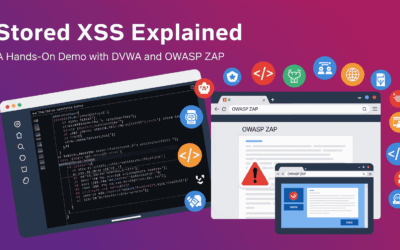Penetration Testing Reports: Unpacking the “Standard” Debate
In my previous blog, “Why Penetration Test Reporting is Your Most Critical Deliverable,” we delved into the profound value of a well-crafted penetration test report. It’s not merely a formality; it’s the culmination of an engagement, translating technical findings into actionable intelligence for stakeholders. But as we move from understanding its importance to the practicalities of creation, a common question arises: Do penetration testing reports have a standard format?
Is there a standard format for penetration testing reports
In short, no, there isn’t a single, universally mandated standard format for penetration testing reports. While various frameworks and guidelines exist, such as NIST SP 800-115 (Technical Guide to Information Security Testing and Assessment) or OWASP’s resources, they offer recommendations on content and structure rather than dictating a rigid template.
Organizations like the SANS Institute also provide excellent examples and advice on report writing, but again, these are best practices and not compulsory standards. This means that while many reports share common sections and information, their exact layout, terminology, and depth can vary significantly between different penetration testing firms and even within the same firm depending on the client and scope of the engagement.
What are the reasons behind the absence of a standard penetration testing report format?
The absence of a singular standard format for penetration testing reports stems from several key factors:
- Diverse Client Needs and Scopes: Penetration tests are highly customized. A test for a small web application will differ vastly from a comprehensive network and application assessment for a multinational corporation. Clients have varying levels of technical understanding, regulatory requirements, and risk appetites. A “one-size-fits-all” report would struggle to cater to such diverse needs effectively.
- Evolving Threat Landscape: The cybersecurity landscape is dynamic. New vulnerabilities, attack vectors, and technologies emerge constantly. A rigid reporting standard might struggle to adapt quickly enough to include relevant findings or reporting methodologies for novel threats.
- Proprietary Methodologies and Value Proposition: Penetration testing firms often develop their own refined methodologies, tools, and expertise. Their report format can be a reflection of their unique approach and how they best communicate their findings and recommendations. Standardizing this could stifle innovation and differentiate services.
- Focus on Actionability, Not Presentation: The primary goal of a penetration test report is to provide actionable insights for remediation. While presentation matters for clarity, forcing a strict format might prioritize aesthetics over the critical information needed for security improvements. The emphasis is on conveying the risks clearly and providing practical steps to mitigate them.
- Subjectivity in Risk Rating and Remediation: While common frameworks exist, the specific risk rating (e.g., high, medium, low) and the granularity of remediation advice can be subjective and depend on the tester’s experience and the client’s context. A rigid format might not allow for this nuanced interpretation.
- Industry and Regulatory Variations: Different industries (e.g., finance, healthcare, government) have specific compliance requirements (e.g., PCI DSS, HIPAA, GDPR). While the core security principles remain, the reporting of compliance-related findings might necessitate specific sections or emphasis, making a single standard challenging to maintain across all sectors.
Despite the lack of a universal standard, most effective penetration testing reports converge on common elements, ensuring that key information is consistently conveyed. These typically include an executive summary, a detailed breakdown of findings, risk ratings, proof-of-concept examples, and clear, actionable recommendations.
Below are list of links that can provide a good starting point when creating your own penetration testing report. While not “standard,” they offer robust structures and content suggestions:
- Chess Cybersecurity-penetration-testing-sample-report
- Offensive Security Exam Report Template in Markdown
- ccso-report-template.docx
For any concerns regarding the provided links, a check with VirusTotal is recommended.
Final Thoughts
While the penetration testing industry may never adopt a single, rigid report standard, the emphasis should always be on clarity, action-ability, and stakeholder relevance. A truly valuable penetration test report transcends its format; it effectively communicates complex technical risks to diverse audiences, empowering organizations to make informed decisions and strengthen their security posture. The goal is not just to document findings, but to drive meaningful security improvements.




